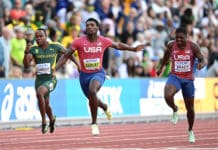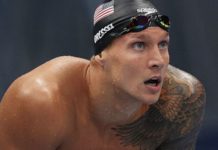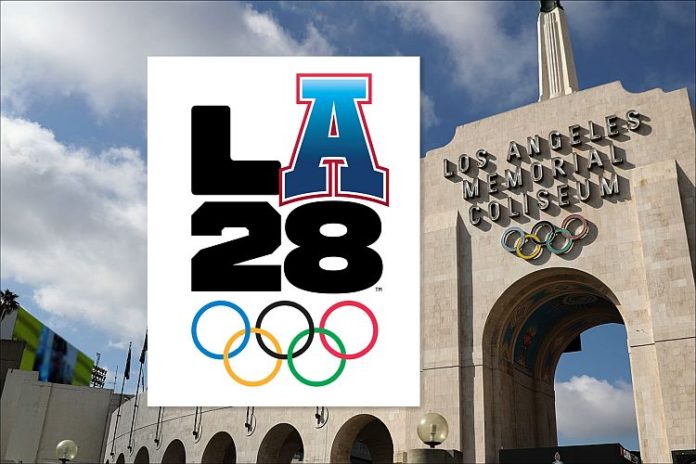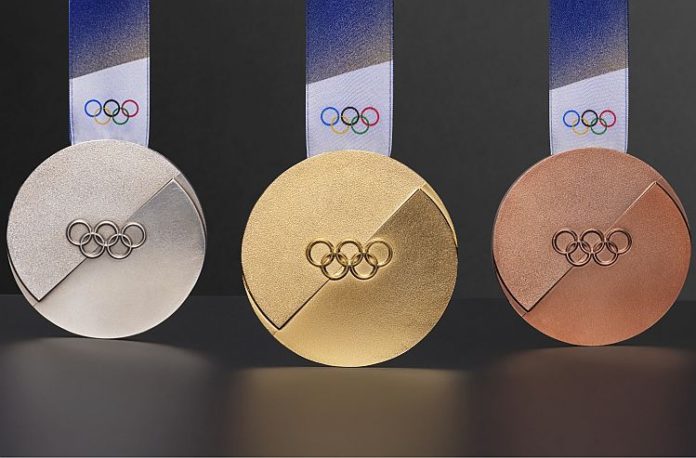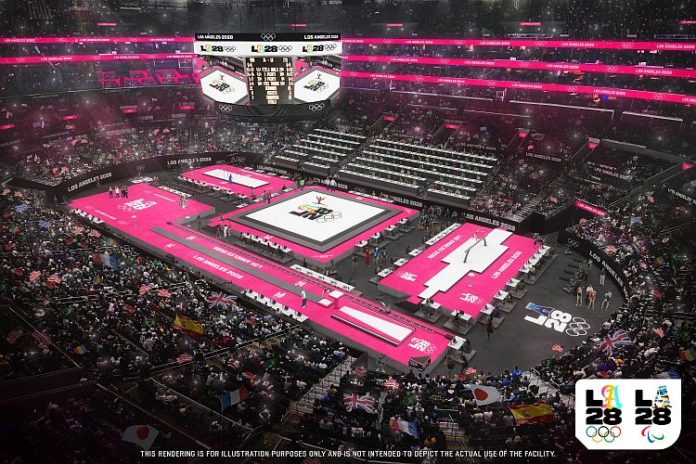★ The Sports Examiner: Chronicling the key competitive, economic and political forces shaping elite sport and the Olympic Movement.★
★ To get the daily Sports Examiner Recap by e-mail: sign up here! ★
≡ LA28 SCHEDULE IN DETAIL ≡
“This schedule represents years of planning to ensure our athletes can compete at their best while inspiring the next generation.”
That’s Shana Ferguson, the LA28 Chief of Sport and Head of Games Delivery, explaining in a news briefing on Tuesday the Wednesday announcement of the detailed 2028 Olympic schedule, including which events will be in which sessions. Look for the links to the schedules on Wednesday (12th) here.
Even a quick look at the schedule shows a historical anomaly on the first full day of competition, as the women’s 100 m – four rounds – will all be run in a single day. The preliminary round – with the slowest runners – and the first round (including the medal contenders) will be run in the morning, between 9 a.m. and 1:30 p.m. The semifinals and finals will be run in the evening session between 5 p.m. and 10:20 p.m. with the two rounds perhaps 45 minutes apart.
The men’s 100 schedule, on the other hand, has the preliminary round and first round on Saturday morning and more than a full day’s rest for the semis and finals on Sunday night.
So, why? Ferguson explained:
“Now the reason to run that women’s 100 meters on the first day is because, my goodness, we want to come out in these Games with a bang, and likely, that race will be among the most watched of all the races in the Games. You just want to start that day one with a massive, massive showcase of the fastest females in the world.”
LA28 Chief Athlete Officer Janet Evans, the four-time Olympic swimming gold medalist, said that agreement to this specific scheduling element was developed with athlete involvement, but without unanimity:
“Yes, we did speak at length with my LA28 Athletes Commission, which includes two athletics female athletes … as well as World Athletics’ Athletes Commission. And yes, athletes always have their knee-jerk reaction first, which is ‘hey, wait, that’s going to be hard,’ and the thing about planning these Games and working with athletes for that is that there’s always going to be a few naysayers, right.
“But it was a largely positive conversation, if you will, and I think, ultimately, it was a little bit like a swimming conversation, which is ‘hey, we’re moving you guys to the second week, but look at the opportunities there’s going to be,’ and with this conversation with the athletics athletes, it is ‘hey, we are going to have you run three 100s on the first day,’ which is something they do in other international competitions. It is only at the Olympics that they have not done this, so this is not new, like a net new thing for the athletes. They have run three 100 meters in competition before in a row, but the trade-offs for us as we presented it to the athletes were incredible, to be the pre-eminent event at the Olympic Games in Los Angeles in 2028 on the first night of competition in the historic Los Angeles Memorial Coliseum.
“And so, I think when we presented it to the athletes that way, there was excitement, and for the few naysayers, the majority of the athletes said to me, ‘just let me know,’ like ‘let me know just what’s going to happen, let me know early, I will start training to run three 100 meters in one day, because it can be done. But I just need to schedule my training and kind of fit my training, how we train,’ which I can’t speak to specifically. But I know in swimming, we would have trained a little bit differently knowing this is something I have to do.
“The majority of athletes did say, ‘let us know, I get it, I understand it, it could be great, let me know,’ and that’s what we’re doing here today.”
The reference to the track & field members of the LA28 Athletes Commission are to Olympic 200/400 m star Allyson Felix, also an IOC member, and Queen Harrison, a 2008 Olympian in the 400 m hurdles.
(Research shows that the women’s 100 m has, as Evans noted, never been run with three or more rounds in a single day in Olympic history, and not either at the World Athletics Championships, which began in 1983. She gave no further details on any other meets at which she contends three or more rounds of the women’s 100 m were run on the same day.)
Those hoping to see U.S. 400 m and hurdles superstar Sydney McLaughlin-Levrone try for a 400-400 hurdles double can forget it. The 400 m rounds are on 15 (a.m.)-18 (p.m.)-20 (p.m.) July (heats-semis-final) and the 400 m hurdles are on 18 (a.m.)-20 (p.m.)-22 (p.m.) July; note the 400 final and the hurdles semis in the same round.
Asked if there could be an appeal on these events to give McLaughlin-Levrone a chance at a historic double, Ferguson said probably not:
● “We work extremely close not only with the IOC, but certainly with each of the International Federations – 36 in all – we don’t do any of this schedule development without them. Quite frankly, they are the experts, so we would be foolish to build any of this schedule without them. It is a painstaking process, it is months and months of work, together with the IFs, shoulder-to-shoulder and hip-to-hip on this. We are taking the lead in many cases from the International Federations, so none of this is done without not only their counsel, but all of their input and advice.
“I can’t speak to any particular athlete’s schedule and how she or he may be approaching the Games, but can say that we’re arm-in-arm with the International Federations in the development not only of the competition schedule, but so much of what we’re doing with each of these competitions and each of these venues, we simply can’t do without the IFs.”
● “What I will say is that each of these schedules, each of these days, each of these sessions was developed over months and months of deliberation, and so I’m hopeful that we have accounted for any eventualities and won’t necessarily have to deal with any sort of inquiries. At this time, this is the schedule that’s been developed and approved in coordination with the IFs and the IOC.”
● “The care and concern that went into this, building the competition schedule, I will tell you that the folks on the team who did it really, truly put a lot of sleepless nights, because they wanted to get this right for every single athlete, regardless of sport. … This is a responsibility we don’t take lightly.”
¶
As for the switch of track & field to the first week (for the first time since 1968), Ferguson said it was about swimming:
“The real reason for this, quite frankly, is the venue share between what we’re calling the ‘2028 Stadium’ which you may know as SoFi Stadium, will be one of the two venues for the opening ceremonies and also the venue for swimming. And in order to transition from opening ceremonies to swimming, we just couldn’t do it, frankly, in the same day, which is what you would need from the swimming competition to start in the first week.
“So big thanks to not only the IOC, but World Athletics and World Aquatics. We were able to flip those two sports so that athletics goes in the first week and swimming in the second week.”
Ferguson said the Paralympic Games schedule is to be released close to the end of the year.
¶
★ Receive our exclusive, weekday TSX Recap by e-mail by clicking here.
★ Sign up a friend to receive the TSX Recap by clicking here.
★ Please consider a donation here to keep this site going.
For our updated, 850-event International Sports Calendar for 2025, 2026 and beyond, by date and by sport, click here!














